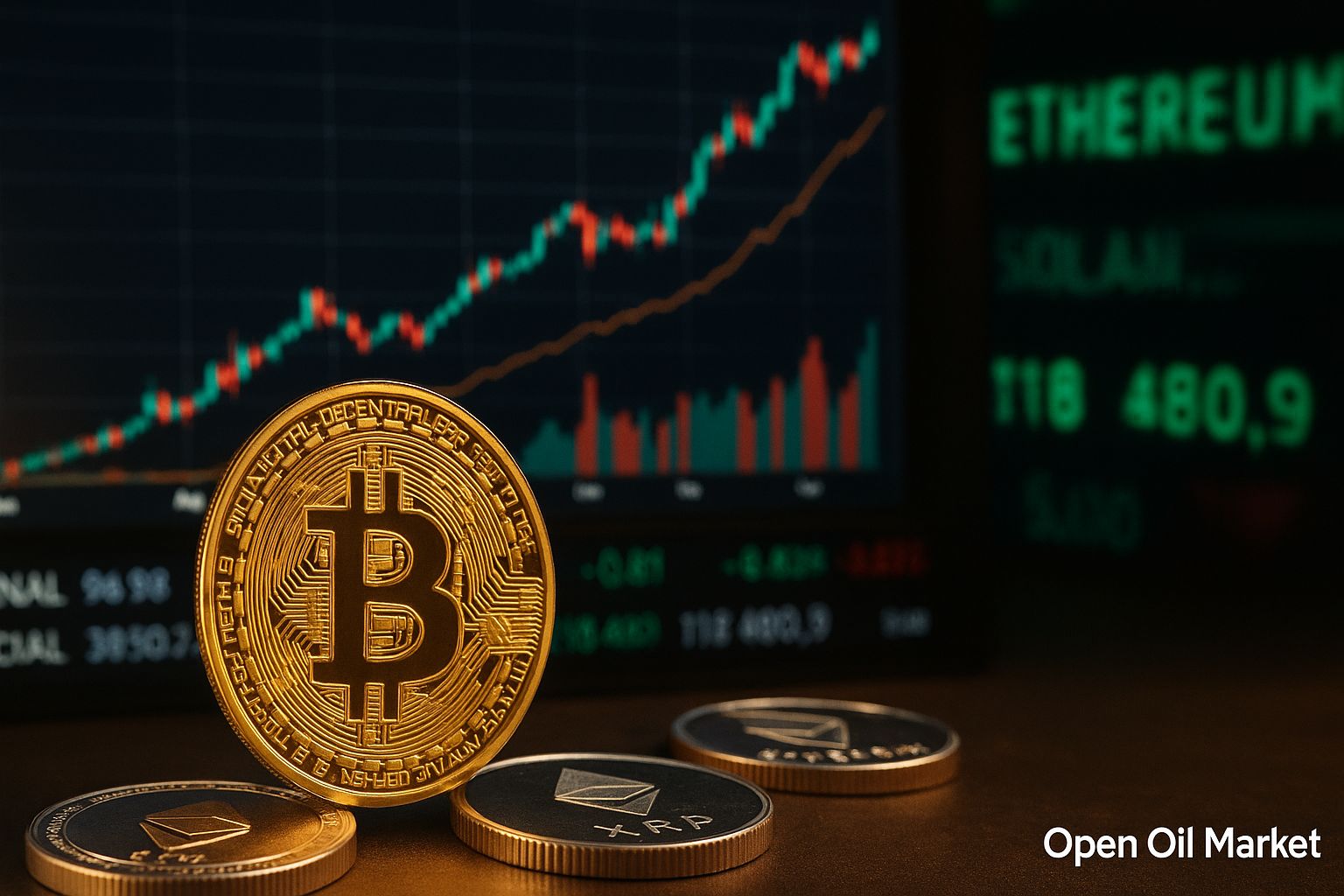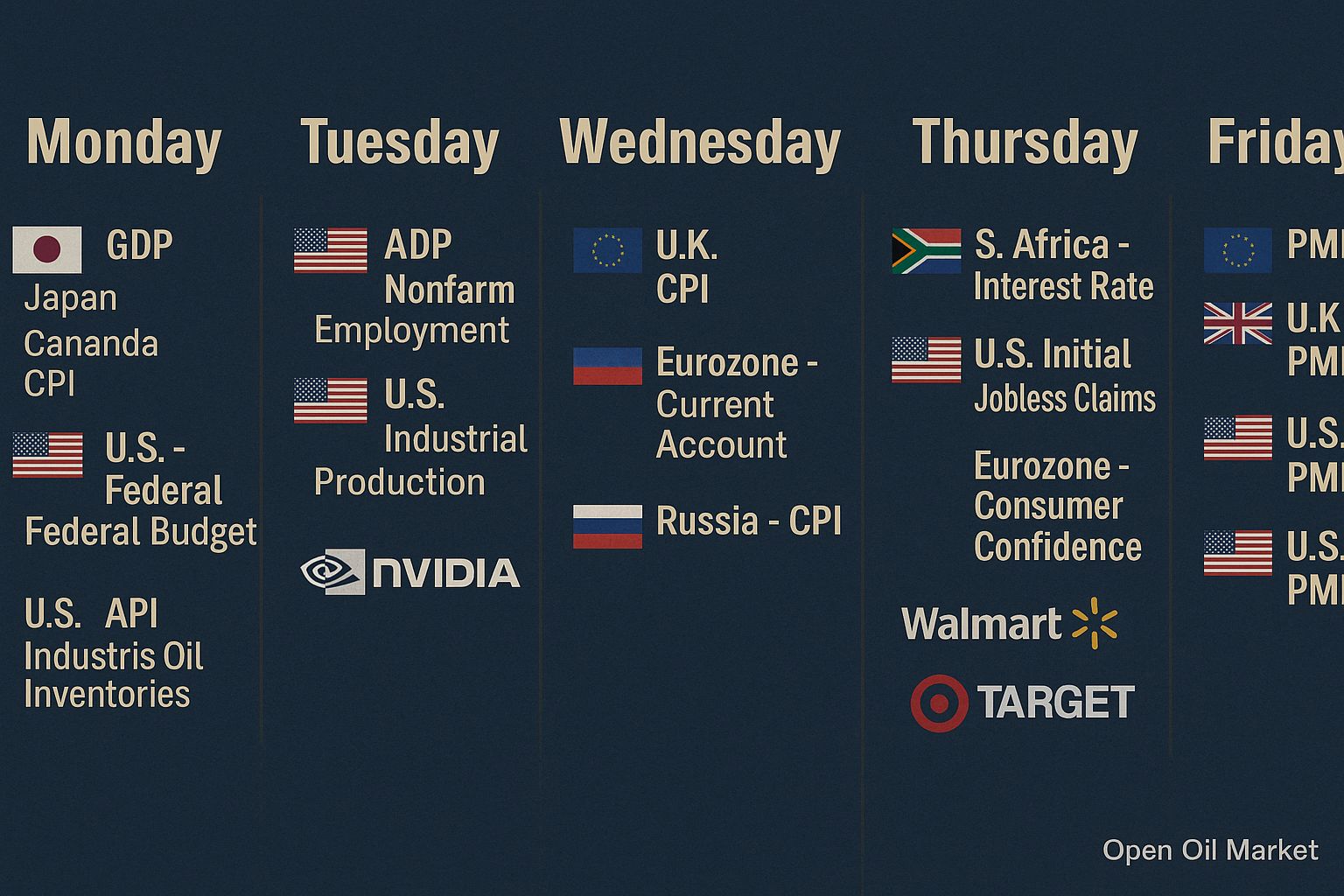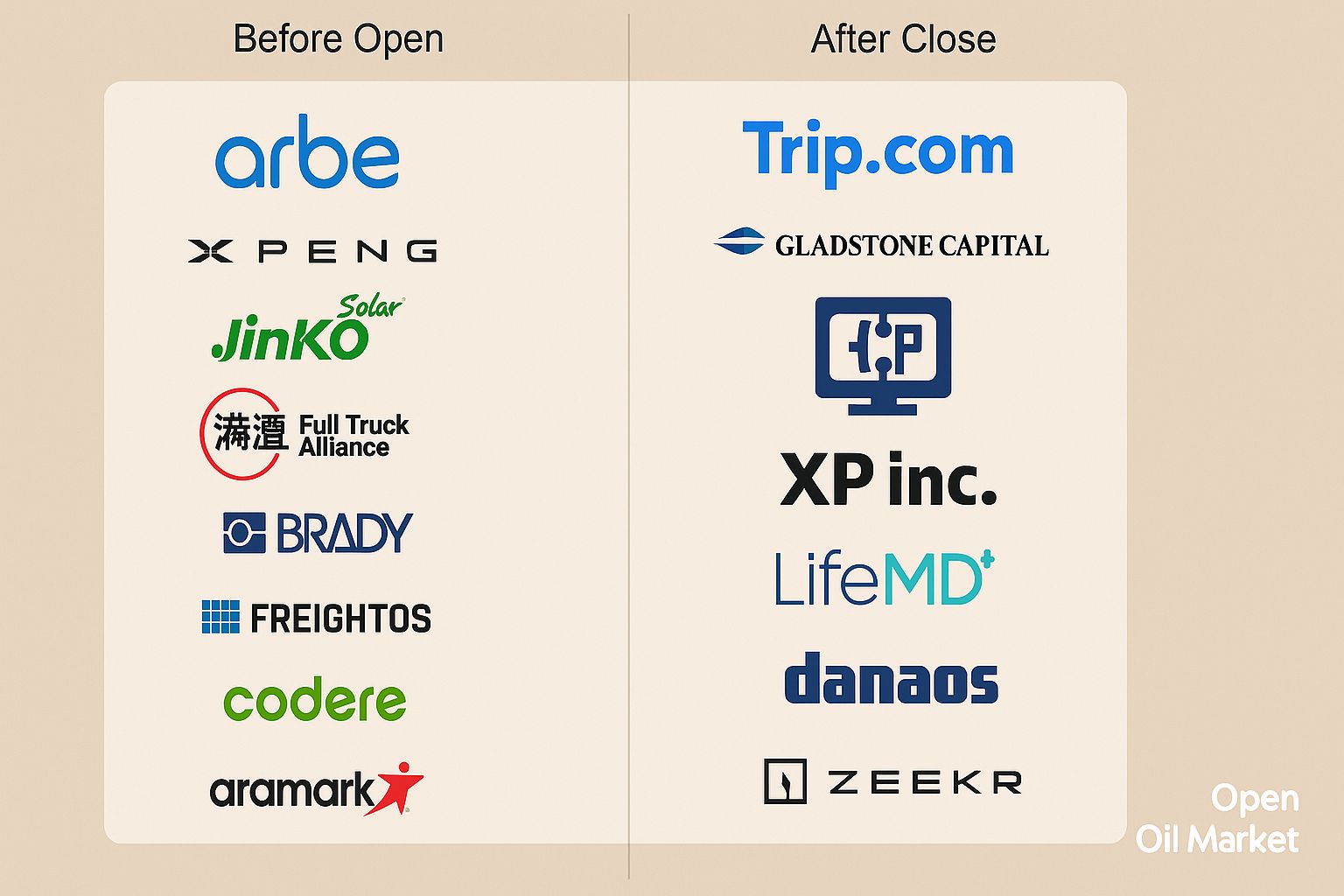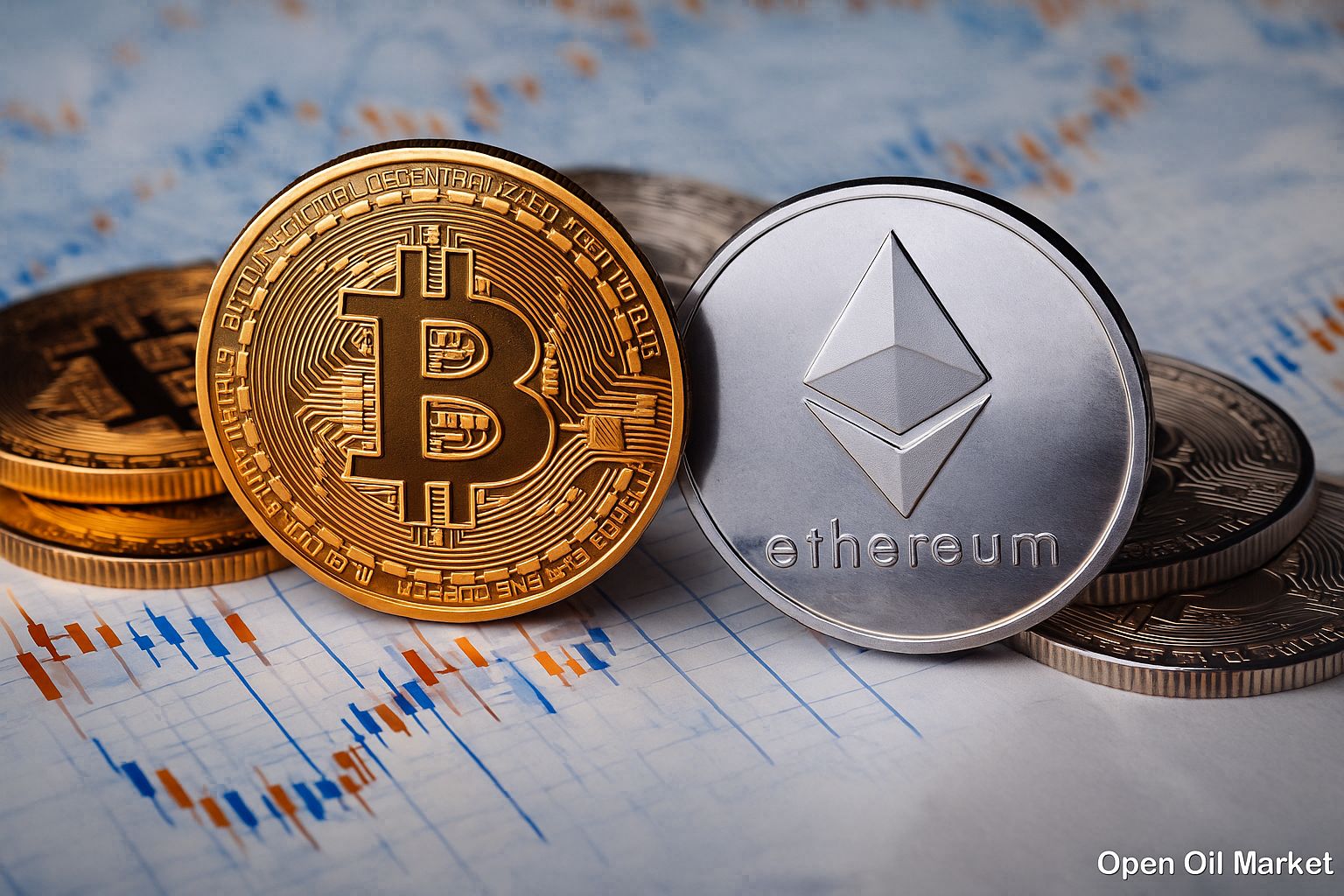
Cryptocurrency News August 1, 2025 – Bitcoin at $118K, SEC and XRP in the Spotlight
The cryptocurrency market continues to attract investor attention: Bitcoin remains close to its historical highs (~$118,000) even after fluctuations caused by statements from the U.S. Federal Reserve. Against the backdrop of relative stabilization in the rates of major coins, there is a high influx of institutional investments, and regulators are announcing new initiatives that could set the tone for the future development of the market. Let's take a closer look at the current situation and key news important for investors as of August 1, 2025.
Market Overview: Bitcoin and Key Trends
Bitcoin (BTC) is consolidating around $116–119K, staying at historical peaks after a significant rise in the first half of the month. Daily volatility has decreased: BTC prices are fluctuating within a narrow range, reflecting a balance between new buyers and investors taking profits. Ethereum (ETH) is trading around $3,800–3,900, gradually approaching the $4,000 mark due to sustained demand. The total cryptocurrency market capitalization holds at approximately $4 trillion, indicating the consolidation of crypto assets as a significant investment class. Investors are also factoring in the macroeconomic backdrop: the U.S. Federal Reserve maintained its interest rate at its July meeting and signaled that it is in no rush to lower it — this signal could influence risk appetite and cryptocurrency market dynamics.
Market sentiment is generally moderately positive. Following a strong rally in recent weeks, many assets have transitioned into a phase of mild correction or sideways trend. The absence of sharp price spikes is perceived as a sign of a healthy market: participants are consolidating profits and awaiting new drivers. In the spotlight are the regulators' next steps and macroeconomic events. In the U.S., the first report from the Presidential Working Group on Digital Assets has been published, setting guidelines for government strategy in the industry, and the market is assessing its conclusions. These factors, along with technical indicators, create an equilibrium point where the market stands as of the morning of August 1st.
Top 10 Most Popular Cryptocurrencies
- Bitcoin (BTC) – around $118,000. The first cryptocurrency remains the largest in the market (over 45% of total capitalization) and is holding at its achieved heights. Investors perceive Bitcoin as "digital gold" and a hedge against inflationary risks, which supports high demand.
- Ethereum (ETH) – approximately $3,850. The largest altcoin (~18% of the market) is strengthening due to network upgrades and record inflows of institutional investments. The immediate target is to break the psychological barrier of $4,000 against the backdrop of a deflationary issuance model for ETH.
- Tether (USDT) – ~$1, the stablecoin #1. USDT provides liquidity in the crypto market, remaining the primary instrument for "parking" capital between trades. The issuer Tether is preparing to enter the U.S. market with a new regulated stablecoin, highlighting the strong demand for reliable "digital dollars."
- Binance Coin (BNB) – ~$800. The token of the largest crypto exchange, Binance, recently reached an all-time high amid rising platform activity. Despite tightening regulations in several countries, BNB has solidified its status as one of the leading coins, providing holders with advantages on the exchange and in the BNB Chain ecosystem.
- USD Coin (USDC) – ~$1, stablecoin #2. The coin issued by the Centre consortium (Circle and Coinbase) plays a crucial role in digital transactions. Full reserve backing and transparency made USDC a benchmark for regulatory compliance, especially amidst new laws on stablecoins.
- XRP (Ripple) – ~$3.15. The token of the Ripple payment network broke into new multi-year highs in July, surpassing the $3 mark for the first time since 2018. XRP's recovery in position is associated with legal clarity in the U.S. following the completion of a protracted lawsuit and expectations for the launch of ETFs based on XRP. The coin attracts institutional investors as an efficient tool for cross-border payments.
- Solana (SOL) – ~$178. The promising Layer 1 blockchain, known for its high transaction speeds, maintains its position among the leaders. SOL has shown significant growth over the year due to the development of the DeFi and NFT ecosystems on Solana, as well as rumors of a possible ETF launch on SOL. Investors note improved network stability following past technical disruptions.
- Cardano (ADA) – ~$0.75. The largest PoS blockchain with a focus on an academic approach to development. While ADA is not reaching new records, it consistently ranks in the top 10. In 2025, the Cardano network is experiencing an active phase of smart contract development and decentralized applications ecosystem, maintaining community and investor interest.
- Dogecoin (DOGE) – ~$0.22. The popular meme cryptocurrency, originally created as a joke, remains one of the largest by market capitalization. DOGE is correcting after price spikes but continues to see demand due to its loyal community and influential endorsements. Dogecoin's volatility sometimes increases under the influence of social media, but overall, the coin moves in line with the broader altcoin market.
- TRON (TRX) – ~$0.33. A smart contract platform and decentralized services founded by Justin Sun, recently broke into the top ten. TRX saw a slight percentage increase this week, standing out amid some altcoin stagnation. The Tron network attracts users with low fees and is actively used for stablecoin issuance and tokenization, supporting the price trend.
Altcoin Growth: XRP, BNB, Solana, and More
The altcoin segment is developing in various directions. Among the most notable successes are the soar of XRP and Binance Coin. XRP, the token of Ripple, exceeded $3 for the first time in seven years, bolstered by positive news regarding regulation and prospects for institutional acceptance. Investors view this as a restoration of trust in the project following prolonged uncertainty. BNB, the native token of the Binance exchange, reached an absolute price record, surpassing previous highs from 2021. Its growth can be explained both by the general market uptrend and high user activity on the Binance platform and associated services.
Other major altcoins are also attracting capital. Solana (SOL) is holding its positions after an impressive rally in the first half of the year — the current rate of around $178 reflects investors' faith in the network's technical potential. Tron (TRX) saw a slight percentage increase earlier this week, being one of the few altcoins in the "green zone." This was attributed to an increase in transaction volume on the Tron network and the integration of stablecoins popular in the Asian region. Meanwhile, several altcoins are showing moderate corrections: for instance, Cardano and Dogecoin have retreated from recent local highs. Nonetheless, interest in alternative cryptocurrencies remains strong — particularly for projects supported by active ecosystems or where ETF launches are anticipated.
Regulation: New Rules and Government Support
The regulatory environment in 2025 has evolved significantly, and fresh initiatives continue to change the rules of the game in the crypto market. In the U.S., the Genius Act has come into effect, establishing federal requirements for stablecoins. This law, signed by President Donald Trump on July 18, mandates that issuers of dollar-pegged tokens (stablecoins) maintain a 100% reserve of liquid assets for the coins they issue, as well as undergo mandatory annual audits for large issuers (with a capitalization above $50 billion). The new rules aim to protect investors and improve trust in stablecoins. Against this backdrop, the largest stablecoin issuer, Tether, announced expansion plans into the U.S. market with the launch of a new institutional stablecoin— a step made possible by the emergence of clear regulatory criteria.
The policy of the U.S. administration is currently favorable to the crypto industry. SEC Chair Gary Gensler announced on July 31 that new rules are being prepared, aimed at integrating cryptocurrencies into traditional finance. The SEC will develop clear criteria for determining when a token is classified as a security, as well as propose disclosure standards and exemptions for crypto assets. The regulator intends to collaborate with companies wishing to offer tokenized securities (stocks and funds on the blockchain). These steps signify a fundamental shift towards a more flexible approach and represent a significant victory for an industry long advocating for clear regulations.
The SEC's initiative followed shortly after the publication of the Presidential Working Group on Digital Assets report, which urged regulators to "immediately allow the trading of digital assets at the federal level." During his election campaign, Trump promised to make the U.S. the "crypto capital of the world," and these promises are now being backed by concrete actions. The new SEC leadership has already scaled back high-profile lawsuits against major exchanges initiated by the previous administration, eliminating significant uncertainty for the market.
In addition to the U.S., clear regulations for the industry are also being established in other regions. In Europe, MiCA regulation provisions have come into effect, applicable across the European Union, which introduce transparent requirements for crypto assets and licensing for companies. This opens up new opportunities for legally operating crypto businesses in the European market. In Asia, several countries, including Hong Kong and Singapore, are competing for the status of regional crypto hub by introducing special regulatory regimes to attract blockchain companies. The global trend is that governments are seeking to integrate cryptocurrencies into the existing financial system through clear regulations — in the long term, this reduces legal risks for investors and major market players.
Institutional Investments Reach Record Levels
Institutional investors are significantly increasing their presence in digital assets at unprecedented rates. According to a report from CoinShares, cryptocurrency investment funds attracted approximately $11.2 billion in July — a record monthly inflow in the history of observations, significantly higher than the previous maximum ($7.6 billion). Capital inflows into crypto funds continued weekly for the past three months, reflecting strong interest from financial institutions. The total assets under management (AUM) in such funds reached about $221 billion, marking a historic peak. For comparison, at the beginning of the year, this figure was substantially lower, but due to the sustained inflow of funds, the market for crypto ETPs and trusts is rapidly expanding.
The influx structure indicates a shifting focus towards altcoins. Last week, Ethereum became the leader — ETH-based funds attracted $1.59 billion within seven days, marking the second-largest weekly inflow in history. Since the beginning of the year, investments in Ethereum products have exceeded $7.7 billion, already surpassing the total result for 2024. Simultaneously, funds focused on Bitcoin recorded an outflow of about $175 million in the week — the first noticeable outflow in a long time. Analysts interpret this as a sign of an emerging "altseason," where large players diversify their positions beyond Bitcoin in search of higher returns. Products based on Solana and XRP have also gained popularity, attracting $311 million and $189 million respectively over the week — this is associated with expectations for ETF launches for these assets and the growth of confidence in them. Meanwhile, traditional altcoins from previous cycles, such as Litecoin and Bitcoin Cash, experienced slight outflows. This indicates a selective approach by investors: capital is flowing mainly into projects deemed the most promising and institutionally prepared.
Major Investors and Companies in the Crypto Market
The growing trust in cryptocurrencies is confirmed by the actions of well-known investors and corporations. Major economic players are betting on digital assets, thereby strengthening the market trend:
- Trump Media & Technology Group (the media holding of former U.S. President Donald Trump) disclosed the acquisition of Bitcoin worth $2 billion. According to the company, Bitcoin now constitutes two-thirds of its liquid assets. This move demonstrates the business sector's confidence in the long-term value of the first cryptocurrency.
- MicroStrategy (an American public company) has increased its Bitcoin reserves to approximately 628,000 BTC (around $74 billion at the current rate). In 2025, the firm attracted significant resources and aggressively increased its cryptocurrency stock, solidifying its status as the largest corporate holder of BTC. This unprecedented case illustrates the growing acceptance of Bitcoin by the corporate sector as a strategic asset.
- Ray Dalio — a legendary investor and founder of Bridgewater Associates — has changed his view on crypto assets and recommended allocating up to 15% of a portfolio to Bitcoin or gold. He called such allocation the optimal balance of risk and return in the context of rising public debt and devaluation of fiat currencies. For comparison, just in 2022, Dalio advised holding only 1-2% in Bitcoin. This pivot is significant: even conservative financiers acknowledge Bitcoin as an effective means of hedging macroeconomic risks.
Such examples of capital infusion and changes in the strategies of major players enhance the legitimacy of cryptocurrencies in the eyes of the market. Previously, participation in digital assets was primarily limited to specialized funds and technology enthusiasts, but now media corporations, public companies, and Wall Street veterans are joining in. This forms a new level of trust and is likely to lead to further capital inflow from traditional financial spheres.
Infrastructure and Technologies: Mining, DeFi, and New Developments
Simultaneously with the growth of investments, the infrastructure of the crypto market is expanding. The mining industry is undergoing significant changes. The largest producer of Bitcoin mining equipment, the Chinese company Bitmain, announced plans to open the first manufacturing facility for ASIC miners in the U.S. The plant's launch is scheduled for early 2026 — thus, Bitmain is responding to the Trump administration's aim of localizing mining operations in America. This decision comes shortly after U.S. authorities promised to create favorable conditions for the industry and introduced tariffs to encourage production relocation from Asia. Such a move strengthens the U.S. position as a new center for crypto mining and reduces geopolitical risks associated with dependence on Asian equipment supplies.
The development of services for retail users is also gaining momentum. The largest fintech platform, PayPal, has implemented a feature called Pay with Crypto, allowing customers to send cryptocurrencies abroad with reduced fees. Integrating digital assets into a popular payment service simplifies international transfers and demonstrates the increasing acceptance of cryptocurrencies within the traditional financial system.
The popular crypto wallet MetaMask, boasting over 100 million registered addresses, has introduced a new function called Stablecoin Earn for generating passive income. Now, stablecoin holders (USDT, USDC, DAI) can directly earn interest within the app thanks to integration with the decentralized lending protocol Aave. Users no longer need to transfer tokens to third-party DeFi platforms — they simply activate the Earn option, and the deposited stablecoins instantly start yielding returns. Additionally, MetaMask has launched a debit card (based on Mastercard), allowing users to spend accumulated funds in regular stores while continuing to earn interest until purchase. This functionality simplifies access for a broad audience to the possibilities of decentralized finance and demonstrates how the lines between traditional banking services and cryptocurrencies are gradually blurring.
Such initiatives — from industrial projects to user services — are forming a more mature ecosystem. The strengthening infrastructure increases the reliability and convenience of using cryptocurrencies, which, in the long run, attracts even more investors and users. The introduction of new technologies, whether through local equipment production or DeFi service integration, facilitates the mass adoption of crypto assets and enhances their role in the global economy.
Prospects and Expectations
As we enter August 2025, the cryptocurrency market showcases a blend of maturity and dynamism. Bitcoin's resilience around the $120,000 mark indicates that the market has digested previous records and is preparing for new challenges. Institutional interest, backed by record inflows and participation from major players, provides a strong upward momentum that could continue in the latter half of the year. At the same time, the growing engagement from regulators—ranging from U.S. authorities to European oversight bodies—reduces uncertainty and lays the groundwork for broader cryptocurrency usage in the economy.
Of course, volatility has not disappeared: digital assets remain sensitive to news and macroeconomic factors. In the coming days, the market will react to the outcomes of the U.S. Federal Reserve meeting and the recent actions of authorities—ranging from the White House report on the crypto industry to SEC statements about new rules. Soft language from regulators or positive news could provide a new boost to the bullish trend, whereas unexpected restrictions or a deteriorating macro backdrop might temporarily dampen investors' enthusiasm. Nonetheless, the overall direction looks promising: the crypto market is increasingly integrating into global finance, and investments in digital assets are transforming from a niche interest into the mainstream.
For investors from the CIS countries and around the world, this signifies an expansion of opportunities and tools. Cryptocurrencies are now viewed not just as a speculative instrument, but also as a part of a balanced investment strategy and a means of capital protection. If current trends continue, further growth in trust toward the sector is expected, leading to the emergence of new products (such as the launch of spot ETFs on various altcoins) and capital inflows from traditional markets. Under these conditions, cautious optimism prevails: the market closely monitors developments, ready to seize emerging opportunities while remaining aware of the risks inherent in this young, high-tech sphere.





